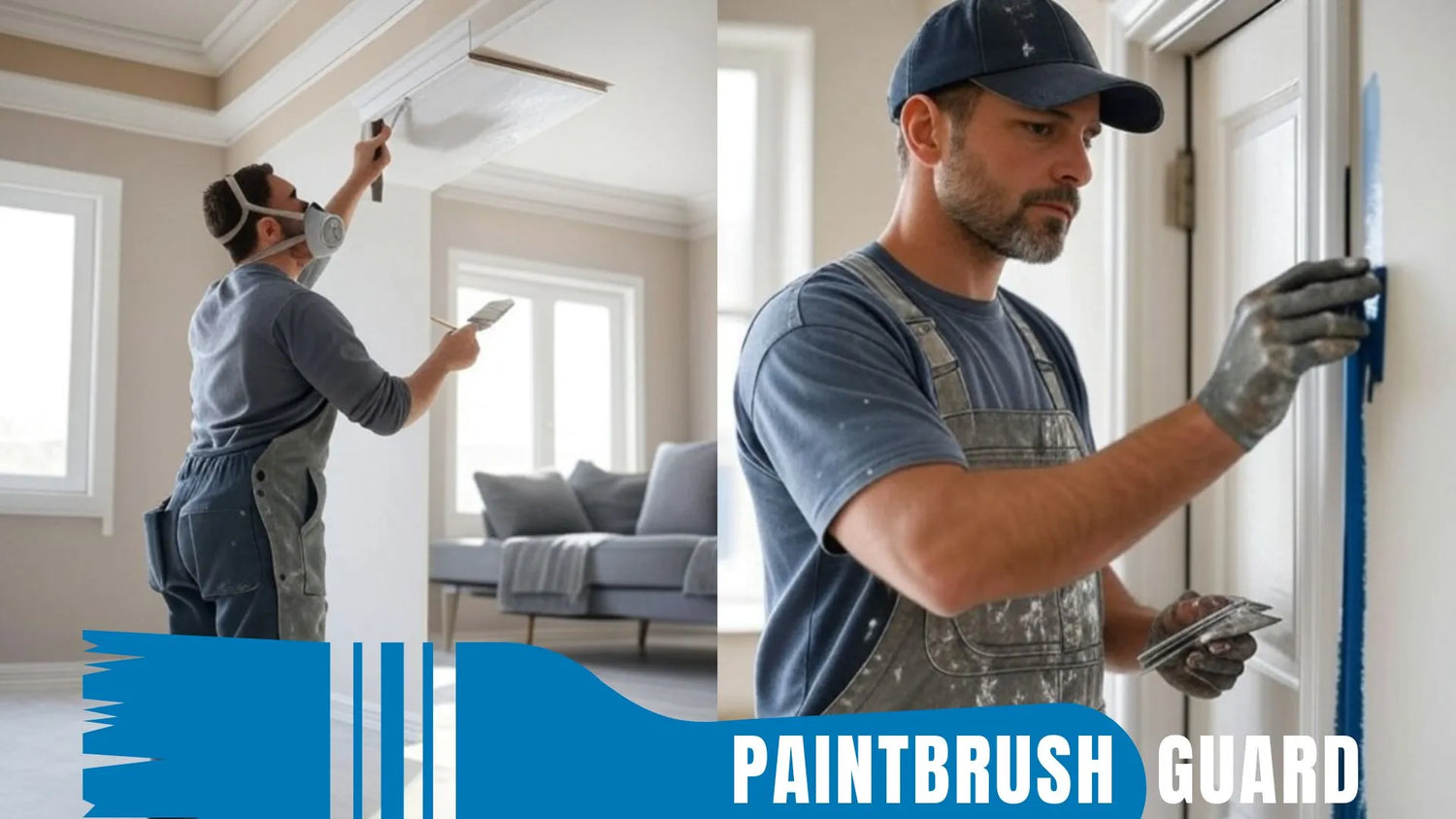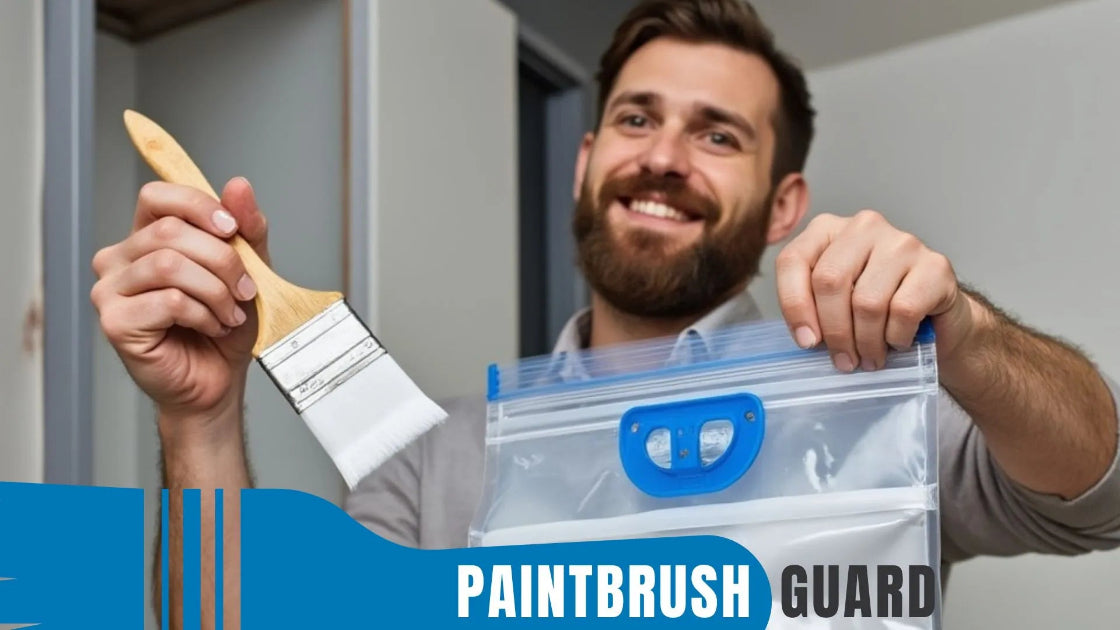
Does Vinegar Clean Paint from Paintbrushes?
|
Time to read 6 min
|
Time to read 6 min
Yes, vinegar can clean paint brushes, particularly for dried water-based paints, by softening the paint for removal, though it’s less effective for oil-based paints, where solvents or vacuum storage are better options.
With no cleanup required after a painting session, you can take a short break mid-project or wrap up your painting for the day, your brush stays ready without the need to clean.
Vinegar is a natural, affordable option for cleaning brushes with dried water-based paint, like latex or acrylic. Its acetic acid content helps break down and soften the paint, making it easier to remove.
Heat a cup of white vinegar on the stove until warm (not boiling), then soak the brush for 1–2 hours. After soaking, use a brush comb or your fingers to work out the softened paint, then rinse with warm water and mild dish soap.
This method, costing just $1–$2 for vinegar, is effective for reviving brushes but takes longer than immediate cleaning, typically 2–3 hours total.
Vinegar is not effective for cleaning brushes used with oil-based paints, as it can’t break down the paint’s oily composition. Oil-based paints require stronger solvents like mineral spirits or paint thinner, which dissolve the paint more effectively.
Soaking a brush with oil-based paint in vinegar might soften the surface slightly, but it won’t remove the paint completely, leaving bristles sticky and unusable.
For these brushes, use a solvent in a well-ventilated area, then wash with soap and water, or opt for the Paintbrush Guard to skip cleaning entirely by keeping bristles wet during breaks.
Paintbrush Guard Benefits: Learn more about the benefits of Paintbrush Guard vacuum storage. Save time, reduce water waste, prevent chemical pollution and cut costs on supplies for house painting projects.
Using vinegar to clean paint brushes offers environmental and safety advantages over chemical solvents. Vinegar is non-toxic, biodegradable, and safe for household use, unlike mineral spirits, which require disposal at a hazardous waste facility due to their environmental impact.
A 2024 EPA report noted that improper solvent disposal contributes to 5% of water system pollutants, making vinegar a greener choice for water-based paints.
It’s also safer to handle, no fumes or skin irritation—making it ideal for DIYers looking for a natural cleaning method without health risks.
While vinegar works for dried water-based paint, it’s slower and less effective than other methods for fresh paint. Immediate rinsing with warm water and dish soap takes just 5–10 minutes and prevents paint from drying in the first place.
For oil-based paints, solvents like mineral spirits clean more thoroughly in 10–15 minutes. The Paintbrush Guard offers a no-clean alternative, vacuum-sealing brushes to keep them wet for days, saving 15–30 minutes per break.
Vinegar is best as a backup for neglected brushes with water-based paint, but it’s not a one-size-fits-all solution compared to these alternatives.
If you are planning to paint your house interior, in this article you will learn easy steps to make your home interior feel new again with step-by-step guides for all interior surfaces.
Vinegar is generally safe, but there are risks to consider when cleaning paint brushes. Prolonged soaking, beyond 2–3 hours, can weaken the glue in the ferrule, causing bristles to loosen or fall out, especially in lower-quality brushes.
Vinegar’s acidity might also dry out natural bristles over time if not rinsed thoroughly, so always follow up with a water-and-soap rinse and condition the bristles with a lanolin-based product.
Synthetic brushes are less affected, but careful use is still necessary to avoid damage, making vinegar a good but not perfect cleaning option.
To clean a paint brush effectively with vinegar, use white distilled vinegar for its higher acidity. Heat it gently to enhance its effectiveness, but don’t boil, as this can damage bristles.
Soak the brush for 1–2 hours, checking periodically to avoid over-soaking. After removing the paint, rinse thoroughly with warm water and soap to neutralize the vinegar, then reshape the bristles and let the brush air dry flat.
For regular maintenance, prevent drying with the PBG Paintbrush Guard, but keep vinegar as a handy solution for brushes that have already hardened with water-based paint.
Learn more about Paintbrush Guard: This guide tackles the top 20 questions about storing paintbrushes, from quick breaks to long-term care, and even challenges like humid coastal areas.
Vinegar can clean paint brushes with dried water-based paint by softening the paint for removal, but it’s ineffective for oil-based paints, where solvents or the Paintbrush Guard are better choices.
It’s an eco-friendly, safe option, though slower than other methods and requires careful use to avoid brush damage.
By following best practices and using vinegar as a backup for hardened brushes, you can maintain your tools effectively, ensuring they’re ready for your next painting project with minimal environmental impact.
Yes, vinegar can clean brushes with dried water-based paints like latex or acrylic. Its acetic acid softens the paint, making it easier to remove after soaking the brush in warm white vinegar for 1–2 hours. After soaking, use a brush comb or fingers to work out the paint, then rinse with warm water and mild soap. This method is affordable and effective for reviving hardened brushes.
Vinegar is ineffective for oil-based paints because it cannot break down their oily composition. Instead, solvents like mineral spirits or paint thinner are needed to dissolve the paint thoroughly. Vinegar may slightly soften the surface but leaves bristles sticky, rendering them unusable. Alternatively, using a Paintbrush Guard to keep brushes wet during breaks eliminates the need for cleaning oil-based paint brushes.
Vinegar is a non-toxic, biodegradable cleaning option that’s safer for the environment than chemical solvents like mineral spirits, which require hazardous waste disposal. Unlike solvents, which contribute to water system pollution, vinegar poses no environmental risk, making it a sustainable choice for cleaning brushes used with water-based paints and supporting eco-friendly home improvement practices.
To avoid damage, don’t soak brushes in vinegar for more than 2–3 hours, as prolonged exposure can weaken the ferrule’s glue, causing bristles to loosen, especially in lower-quality brushes. Vinegar’s acidity may also dry out natural bristles if not rinsed thoroughly. After cleaning, rinse with warm water and soap, reshape the bristles, and air dry flat to maintain the brush’s condition.
Vinegar is slower than immediate rinsing with warm water and soap, which takes 5–10 minutes for fresh water-based paint. For oil-based paints, solvents clean faster in 10–15 minutes. The Paintbrush Guard offers a no-clean alternative by keeping brushes wet. Vinegar is best for reviving hardened water-based paint brushes but isn’t as efficient or versatile as these other methods for regular maintenance.

Learn about eco-friendly painting, tips and tutorials on house interior and exterior surfaces, so you can get started with your project without any surprices during or after your painting.

Learn how interior house paint colors influence mood with expert tips on room preference so you can pick the best colors for a harmonious home environment.
We focus on the most popular shades for each interior colors, so you don't miss no matter what color you pick.

Learn how this innovative tool allows you to store paintbrushes without the need for immediate cleaning, offering significant advantages in time savings, water conservation, reduced chemical pollution, and lower costs for supplies.
